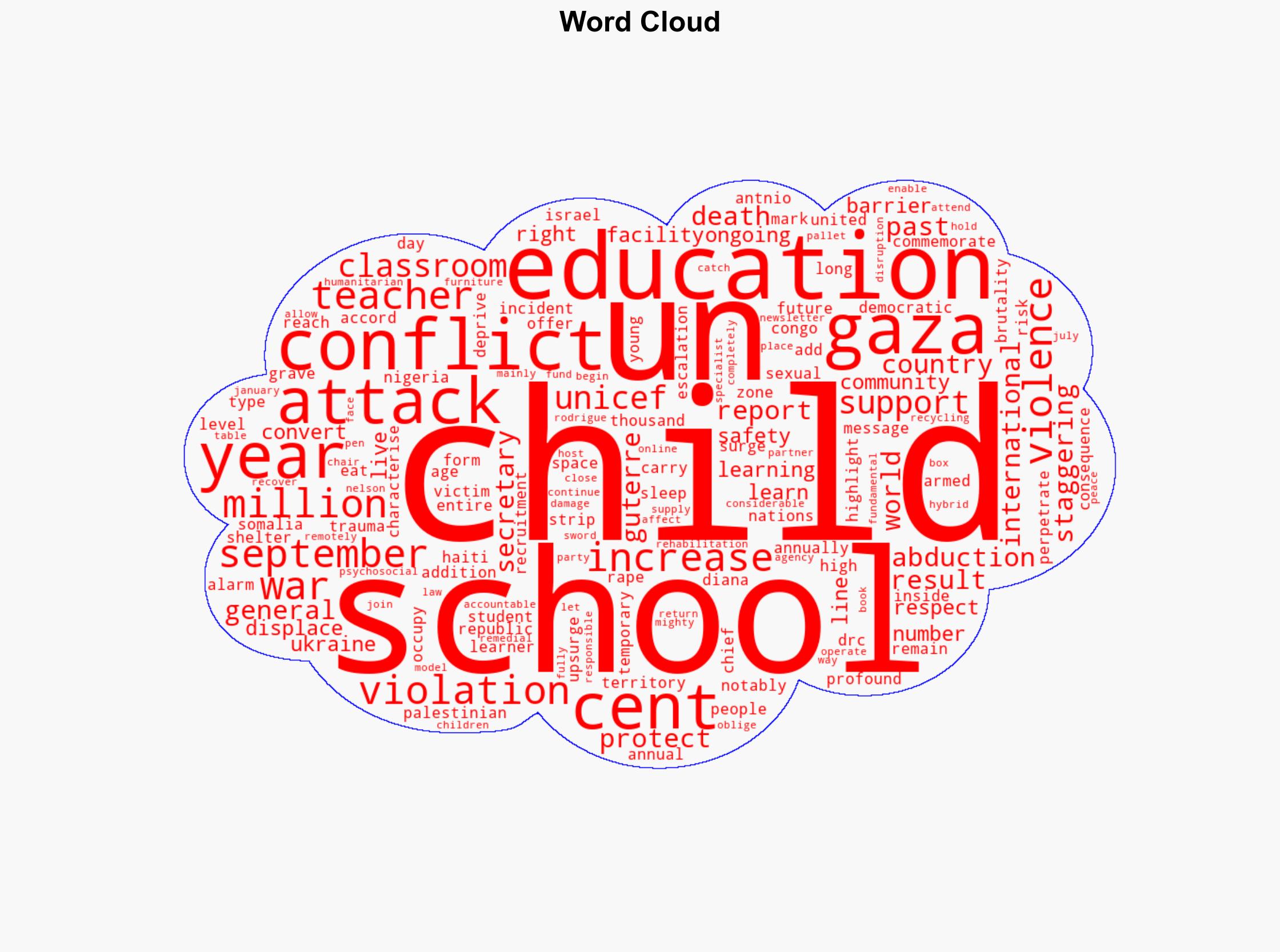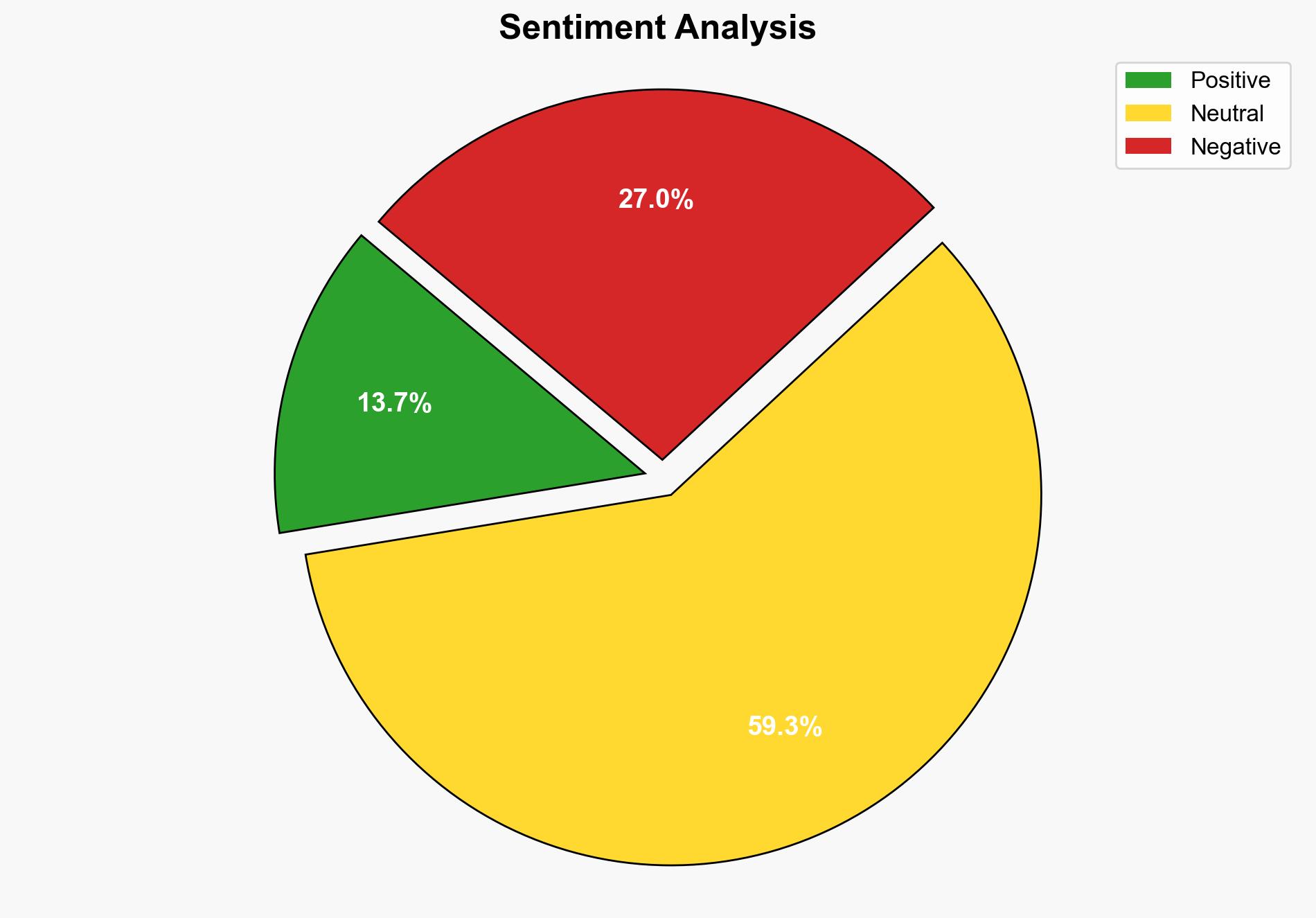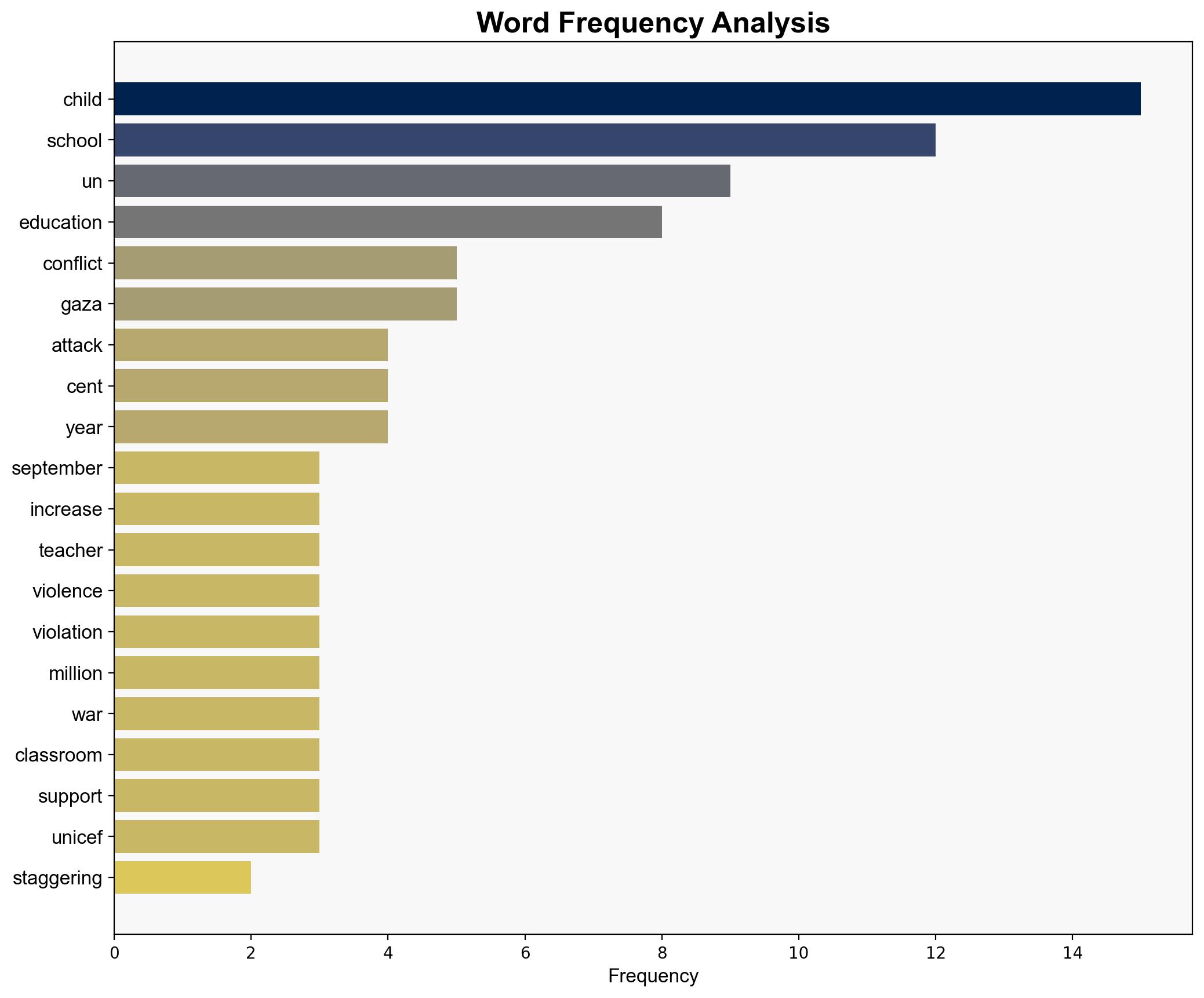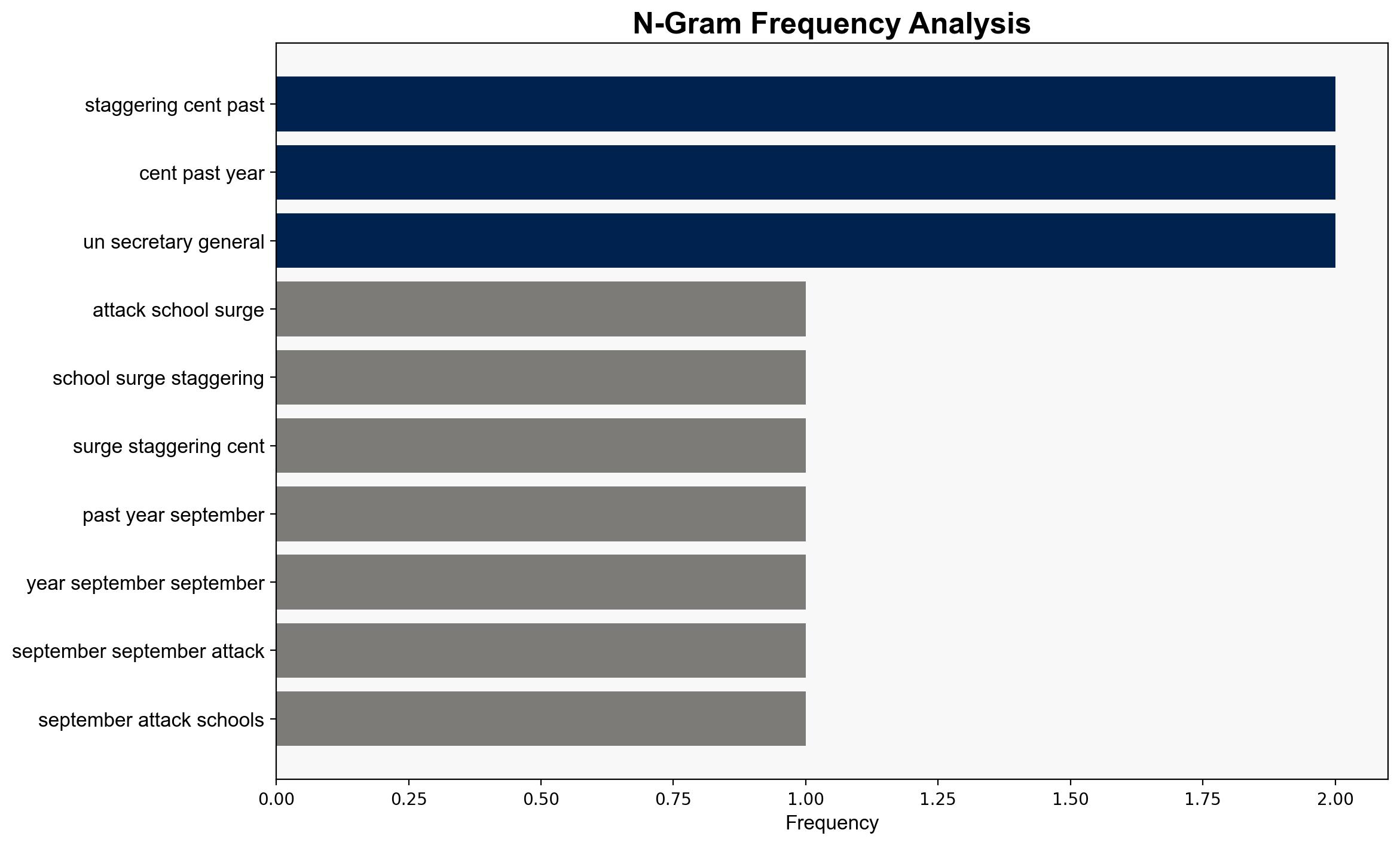Attacks on schools surge by ‘staggering’ 44 per cent over the past year – Globalsecurity.org
Published on: 2025-09-10
Intelligence Report: Attacks on schools surge by ‘staggering’ 44 per cent over the past year – Globalsecurity.org
1. BLUF (Bottom Line Up Front)
The surge in attacks on schools, increasing by 44% over the past year, is primarily driven by escalating conflicts in specific regions, notably Gaza, the Democratic Republic of Congo, and Ukraine. The most supported hypothesis suggests that these attacks are strategic efforts by conflicting parties to disrupt societal stability and future generations’ education. Confidence level: Moderate. Recommended action includes enhancing international diplomatic efforts and increasing protective measures for educational institutions in conflict zones.
2. Competing Hypotheses
1. **Hypothesis A**: The increase in attacks on schools is a deliberate strategy by armed groups to destabilize regions by targeting future generations and disrupting societal structures.
2. **Hypothesis B**: The rise in school attacks is an unintended consequence of broader conflicts, where schools are collateral damage rather than primary targets.
Using ACH 2.0, Hypothesis A is better supported due to the strategic nature of targeting educational institutions, which aligns with historical patterns of conflict where disrupting education serves long-term destabilization goals.
3. Key Assumptions and Red Flags
– **Assumptions**: It is assumed that all reported incidents are accurately attributed to deliberate attacks rather than misreported collateral damage.
– **Red Flags**: Potential bias in reporting from conflict zones where access is limited and data may be incomplete or skewed.
– **Blind Spots**: Lack of detailed intelligence on the specific motivations of attackers in each region.
4. Implications and Strategic Risks
The increase in school attacks poses significant risks to regional stability, potentially leading to a generation deprived of education, which can exacerbate poverty and instability. The psychological impact on children and communities could lead to long-term societal trauma. Geopolitically, these attacks may strain international relations and humanitarian efforts, while economically, they could hinder development in affected regions.
5. Recommendations and Outlook
- Enhance international diplomatic efforts to negotiate ceasefires and protect educational institutions.
- Increase funding and support for UN and NGO initiatives aimed at safeguarding schools and providing alternative education solutions.
- Scenario-based projections:
- **Best Case**: Successful international intervention leads to a reduction in attacks and restoration of educational services.
- **Worst Case**: Continued escalation of attacks results in widespread educational disruption and regional destabilization.
- **Most Likely**: Ongoing conflict with sporadic international efforts leading to gradual improvements in some regions.
6. Key Individuals and Entities
– António Guterres (UN Secretary-General)
– Nelson Rodrigues (UNICEF Education Specialist)
7. Thematic Tags
national security threats, education in conflict zones, humanitarian intervention, geopolitical instability





